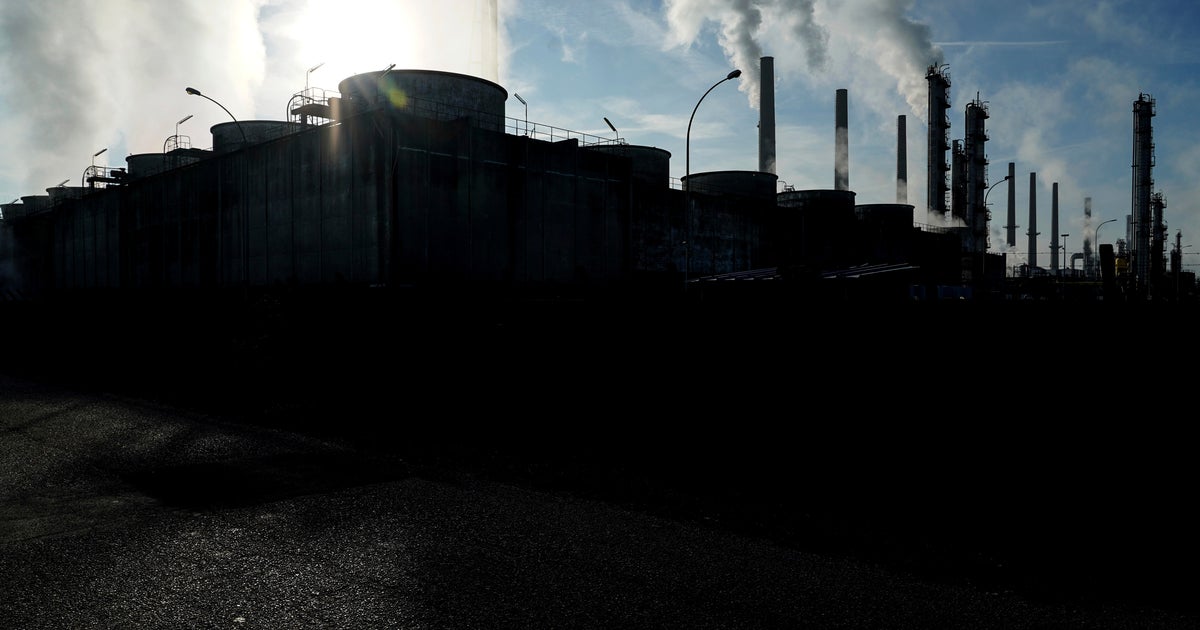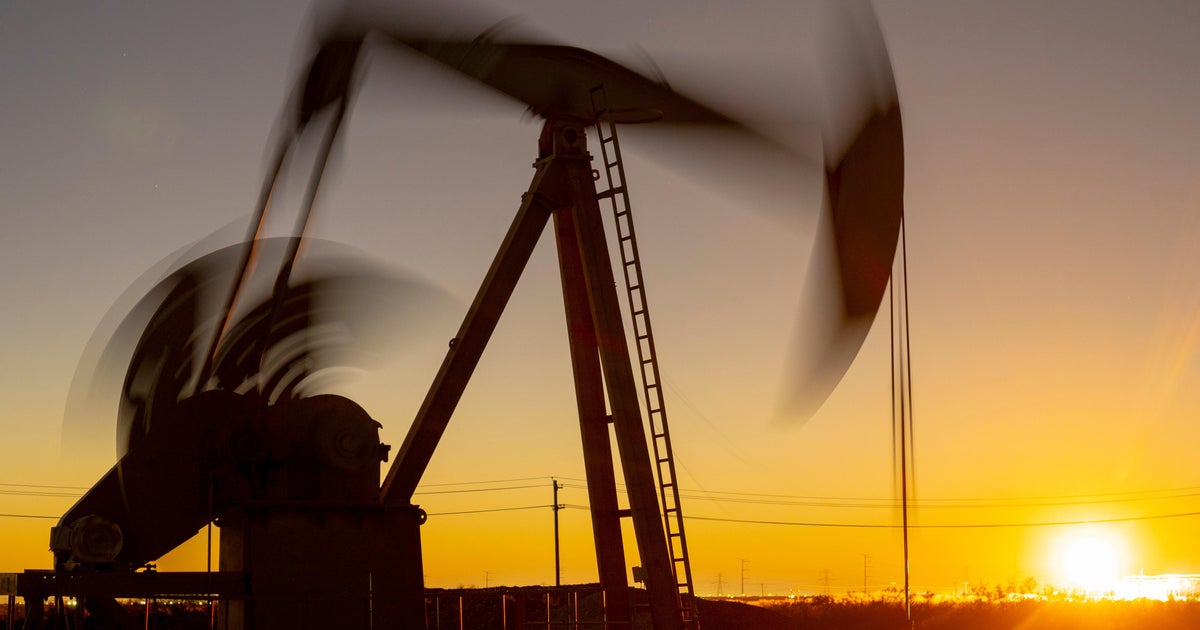What is the Willow project in Alaska? Controversial oil drilling plan explained
The Biden administration is approving a major oil project on Alaska's petroleum-rich North Slope that supporters say represents an economic lifeline for Indigenous communities in the region but environmentalists say is counter to President Joe Biden's climate goals.
The announcement comes a day after the administration, in a big conservation move, said it would bar or limit drilling in some other areas of Alaska and the Arctic Ocean.
The decision on ConocoPhillips Alaska's Willow project, in a federal oil reserve roughly the size of Indiana, was revealed Monday.
What is the Willow project?
The project could produce up to 180,000 barrels of oil a day, according to the company — about 1.5% of total U.S. oil production. The project is the largest proposed oil drilling on U.S. public land and the biggest oil field in Alaska in decades. Alaska Republican U.S. Sen. Dan Sullivan said the development could be "one of the biggest, most important resource development projects in our state's history."
On average, about 499,700 barrels of oil a day flow through the trans-Alaska pipeline, well below the late-1980s peak of 2.1 million barrels.
ConocoPhillips Alaska had proposed five drilling sites as part of the project. The U.S. Bureau of Land Management approved three drill sites, which ConocoPhillips Alaska has said it considered a viable option. The Interior Department, which oversees the land management agency, said the final approval reduces the project's drill pads by 40%.
The company also agreed to give up rights to about 68,000 acres in existing leases within the National Petroleum Reserve-Alaska, where Willow is located. The action reduces the project's freshwater use and eliminates all infrastructure related to the two rejected drill sites, including approximately 11 miles of roads, 20 miles of pipelines and 133 acres of gravel, all of which reduces potential impacts to caribou migration and subsistence users, Interior said.
Using the oil from Willow would produce the equivalent of more 263 million tons (239 million metric tons) of greenhouse gases over the project's 30-year life, roughly equal to the combined emissions from 1.7 million passenger cars over the same time period. It would have a roughly 8% reduction in emissions compared with Houston-based ConocoPhillips' favored approach.
Is there support for the Willow project?
There is widespread political support in Alaska, including from the bipartisan congressional delegation, Republican Gov. Mike Dunleavy and state lawmakers. On Monday, Dunleavy tweeted: "The Willow project's approval is great news for Alaska, but the Biden administration banning new oil and gas development across 16 million acres in Alaska is a bad deal."
There also is "majority consensus" in support in the North Slope region, said Nagruk Harcharek, president of the group Voice of the Arctic Iñupiat, whose members include leaders from across much of that region. Supporters have called the project balanced and say communities would benefit from taxes generated by Willow to invest in infrastructure and provide public services.
City of Nuiqsut Mayor Rosemary Ahtuangaruak, whose community of about 525 people is closest to the proposed development, is a prominent opponent who is worried about impacts on caribou and her residents' subsistence lifestyles. But opposition there isn't universal. The local Alaska Native village corporation has expressed support.
U.S. Rep. Mary Peltola, a Democrat who is Yup'ik, said there is "such consensus in the region and across Alaska that this project is a good project." She hoped to make a case to Mr. Biden that the project would create well-paying union jobs.
Ahtuangaruak said she feels voices like hers are being drowned out.
What is the Alaska oil controversy?
Mr. Biden's decision pits Alaska lawmakers against environmental groups and many Democrats in Congress who say the project is out of step with his goals to slash planet-warming carbon emissions in half by 2030 and move to clean energy. Environmentalists say approval of the project represents a betrayal by Biden, who promised during the 2020 campaign to end new oil and gas drilling on federal lands.
Environmental activists have promoted a #StopWillow campaign on social media, seeking to remind Mr. Biden of his pledges to reduce planet-warming greenhouse gas emissions and promote clean energy.
Biden has made fighting climate change a top priority and backed a landmark law to accelerate expansion of clean energy such as wind and solar power and move the U.S. away from the oil, coal and gas.
He has faced attacks from Republican lawmakers who blame him for gasoline price spikes that occurred after Russia's invasion of Ukraine.
Did the Biden administration support Willow early on?
Justice Department attorneys in 2021 defended in court an environmental review conducted during the Trump administration that approved the project. But a federal judge later found flaws with the analysis, setting aside the approval and returning the matter to the land management agency for further work. That led to the review released in early February.
Sen. Lisa Murkowski, R-Alaska, said Monday the decision was "very good news for the country."
"Not only will this mean jobs and revenue for Alaska, it will be resources that are needed for the country and for our friends and allies," Murkowski said. "The administration listened to Alaska voices. They listened to the delegation as we pressed the case for energy security and national security."
Earthjustice and other environmental groups encouraged project opponents to call the White House, urging Willow's rejection.
What about greenhouse gas emissions?
Federal officials under former President Donald Trump claimed increased domestic oil drilling would result in fewer net global emissions because it would decrease petroleum imports. U.S. companies adhere to stricter environmental standards than those in other countries, they argued.
After outside scientists rejected the claim and a federal judge agreed, the Interior Department changed how it calculates emissions.
The latest review, under the Biden administration, received pushback over its inclusion of a suggestion that 50% of Willow's net emissions could be offset, including by planting more trees on national forests to capture and store carbon dioxide. Reforestation work on federal lands was something the administration already planned and needed to meet its broader climate goals. The reforestation proposal was dropped from the final decision released Monday.
"We're locking in emissions for 30 years into the future when we should be on a reduction schedule," said Michael Lazarus, a senior scientist at the Stockholm Environment Institute.
Climate advocates argue that even three drilling sites would produce an estimated 278 million tons of greenhouse gases over the course of 30 years, which is ConocoPhillips' proposed timeline for the Willow project. That emissions volume is roughly the same amount two million cars would generate over the same time period.
What about Biden's promises to curtail oil drilling?
Mr. Biden suspended oil and gas lease sales after taking office and promised to overhaul the government's fossil fuels program.
Attorneys general from oil-producing states convinced a federal judge to lift the suspension -- a ruling later overturned by an appeals court. The administration ultimately dropped its resistance to leasing in a compromise over last year's climate law. The measure requires the Interior Department to offer for sale tens of millions of acres of onshore and offshore leases before it can approve any renewable energy leases.
The number of new drilling permits to companies with federal leases spiked in Mr. Biden's first year as companies stockpiled drilling rights and officials said they were working through a backlog of applications from the Trump administration. Approvals dropped sharply in fiscal year 2022.
The Biden administration has offered less acreage for lease than previous administrations. But environmentalists say the administration hasn't done enough.
U.S. Interior Secretary Deb Haaland in a recent interview declined direct comment on Willow but said that "public lands belong to every single American, not just one industry."
What other actions is the Biden administration taking?
On Sunday, a day before the Willow project was approved, Biden announced he will bar drilling in nearly 3 million acres of the Arctic Ocean and impose new protections in the petroleum reserve. The withdrawal of the offshore area ensures that important habitat for whales, seals, polar bears and other wildlife "will be protected in perpetuity from extractive development,″ the White House said in a statement.
The action completes protections for the entire Beaufort Sea Planning Area, building upon President Barack Obama's 2016 withdrawal of the Chukchi Sea Planning Area and the majority of the Beaufort Sea, the White House said.
Separately, the Biden administration moved to protect more than 13 million acres within the petroleum reserve, a 23-million-acre chunk of land on Alaska's North Slope set aside a century ago for future oil production.
Areas to be protected include the Teshekpuk Lake, Utukok Uplands, Colville River, Kasegaluk Lagoon and Peard Bay Special Areas, collectively known for their globally significant habitat for grizzly and polar bears, caribou and hundreds of thousands of migratory birds.





